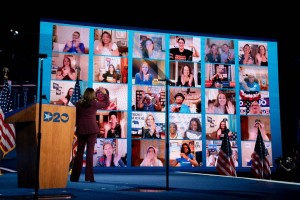
We Are the Zoomers
August 20th, 2020
If someone had mentioned the word “Zoom” to me in 2019, I would have looked at them blankly, wondering what it was. When explained to me, I would have said vaguely, “Oh, that’s interesting,” and moved on. In 2019, we were meeting in cafés, holding retreats, signing up for various forums in hotels, caught up in a social whirl; or simply, visiting family and friends on weekends and hanging out somewhere together after work.
In other words, we were sociable.
Now, Zoom is the social space for many: from sessions on road safety, democracy and environmental issues, where I am trying hard to absorb as much information as I can and end up saying “Do you have a link to the recording?” as my scribbled notes once again fail me; to informal chats with fellow birders and colleagues at Global Voices; to actually learning how to “share screen” and show my own presentation, as I did at the North American Ornithological Conference (NAOC2020) last week. Not to mention those press briefings.

NAOC 2020 attracted online participants from every continent except Antarctica. A huge challenge to organize, it was nevertheless a resounding success.
The fact is, many of us who are used to regular meetings and seminars have now become used to Zoom. It has been a lifeline for many of us – frustrating at times, but certainly serving a purpose. And these online platforms can be employed on such a huge scale. The NAOC had expected some 1,000 in-person participants at its planned conference in Puerto Rico; instead, it ended up with around three times that number, from far-flung countries, who would probably have never made it to the convention centre. The Virtual Island Summit, the brainchild of Island Innovation’s James Ellsmoor, is coming up (September 7 to 13) and is astonishing in its reach, with participants from over 100 islands around the world, spanning time zones with ease.
I have written before about the pandemic and the oft-cited “digital divide.” I have been giving it some thought and realized that Zoomland, for all its stunning outreach capabilities, is not particularly inclusive. Invisibly, unconsciously, it abides by the same societal limitations as a seminar at the University of the West Indies, for example: those of class, demographics, and access to the technology because of participants’ economic capacity, or lack of it. Except, of course, that each participant can be sitting in their kitchen, bathroom or living room, or even on a park bench – physical space matters not.
I overheard a conversation the other day that went something like this: “Oh, we will have to teach the older people to learn Zoom; they can manage their little WhatsApp groups, after all…” As an older person myself (who admittedly does sometimes forget to unmute) I find this immensely patronizing. There is absolutely no reason why Grandma, at home and missing her family, cannot meet up online for a family celebration or special occasion – or just to touch base. It would probably take her fifteen minutes and a bit of practice to be able to do so. No one should be left behind. Inclusiveness should be the mantra of the “new normal.”
This is something that concerns me about the “tech community” – and I know this is not unique to Jamaica. It is a little too pleased with itself, and it is intimidating to outsiders. “Techies” know all the secrets; they enjoy collaborating; they give each other awards; they discuss their latest projects – online, of course. But when do they reach out to bring others without their mysterious inside knowledge into the fold?

Kamala Harris acknowledges the online applause after her nomination speech at the Democratic National Convention this week. Applause was broadcast on a video screen at the site of Ms. Harris’s speech. The convention has been conducted virtually because of the coronavirus pandemic. (Credit…Erin Schaff/The New York Times)
I watched in awe as U.S. Vice Presidential candidate Kamala Harris received “virtual applause” from a huge screen covered with a bank of family, friends and fans, each in their own little box, clapping and cheering, at the virtual Democratic National Convention. Musical performances, whether rock bands or grand choirs, take on a different dimension when each musician is in his/her own space – but it all, somehow, comes together. It actually creates a community.
At the best of times, Zoom is a community; at worst, it can be fragmented – just like society when people are not communicating properly.
But isn’t it time, now, for we “netizens” to expand our reach so that every one of us – young, not so young, rich, not so rich, differently abled – can take his or her place in the online world, headphones pinned to ears, uttering those immortal words:
“Can you hear me?”
Tags: communication, Democratic National Convention, Internet, James Ellsmoor, Kamala Harris, NAOC 2020, North American Ornithological Conference, senior citizens, Technology, University of the West Indies, Virtual Island Summit, Zoom
The Gleaner reserves the right not to publish comments that may be deemed libelous, derogatory or indecent.
To respond to The Gleaner please use the feedback form.
- We Are the Zoomers
- Living Online with Humans and Birds: NAOC 2020
- Human Trafficking and the Problem of Public Education
- Down Memory Lane
- Are We Ready to Recover from COVID-19?
- Road Safety Matters: Is Your Vehicle Safe?
- Sexual Harassment, Me Too, and the Minister’s Disturbing Giggle
- The Vulnerable Senior Citizens, Private Care Homes and COVID-19
- A Muddle Over Masks
- Here is Something Life-Saving You Can Do: Give Blood!




